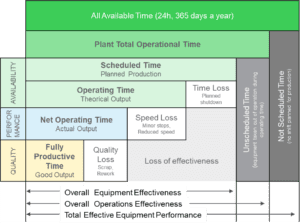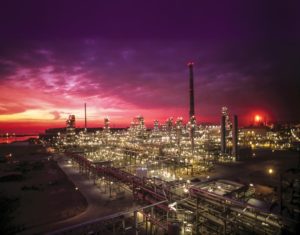This audio was created using Microsoft Azure Speech Services
The focus of this blog, and of the next two, is to identify industrial automation trends in the Digital Transformation to Industry 4.0, also known as the Fourth Industrial Revolution. During this transformation, it is critical to be well positioned to integrate control and information in a real-time process control and transactional information management environment.
This Digital Transformation comprises three pillars: Asset Performance, Augmented Operators and Smart Control. The first two pillars are information-centric, whereas the last; Smart Control, is control-centric.

Asset Performance
The first transformation pillar – Asset Performance – seeks to migrate the industrial automation sector from reactive maintenance to predictive maintenance, by not only managing the asset itself but by managing its performance too.
A periodic daily, weekly, monthly or annual maintenance cycle can be supplemented by real time monitoring of plant, which may flag an alarm that maintenance may be required in a couple of hours’ time for example. Looking at different data that can be collected from this asset, we can look at the profile of the asset to identify problems either with the asset or with the process.
The lifecycle cost of an asset is roughly five to 15 times that of its original purchase cost, so it is necessary not only to manage the asset but to get the best performance from it.
It can be shown that by managing asset performance, the cost of inventory holding can be reduced by between 20 and 50 percent, as well a 10 to 40 percent reduction in maintenance costs and a 30 to 50 percent reduction in total machine downtime. These are the quantified benefits of Digital Transformation based on studies conducted by McKinsey Management Consultants.
As an information-centric platform, Asset Performance can be boosted by fitting secondary low cost wireless Industrial Internet of Things (IIoT) sensors acting together to provide additional data on top of existing ones provided by e.g. primary wired sensors and actuators in order to deliver insightful information-centric analytics.
 Asset information management provides better insight and tracking around assets and their life cycle. Remote services for machines reduces maintenance cost and optimizes machine performance through connectivity. Remote monitoring and optimisation encourages migration from reactive to predictive maintenance with analytics.
Asset information management provides better insight and tracking around assets and their life cycle. Remote services for machines reduces maintenance cost and optimizes machine performance through connectivity. Remote monitoring and optimisation encourages migration from reactive to predictive maintenance with analytics.
Avoiding unnecessary and costly maintenance while preserving the vital parts of a process based on its usage and environment is critical to the asset performance pillar. Being able to predict is therefore key. The objective is really to maximize operational up time through early detection, to minimize maintenance costs by reducing unnecessary maintenance, and to maximize productivity by improving decision making process response time.
In the next blog, we will look at the second transformation pillar – Augmented Operators. This seeks to empower the operator with information, but more about all this will follow next time.




Conversation
Smita
8 years ago
Great information shared.
Fabrice Jadot
8 years ago
Hello Smita, Thank you for taking the time to comment on my blog, it is nice to know you enjoyed it.